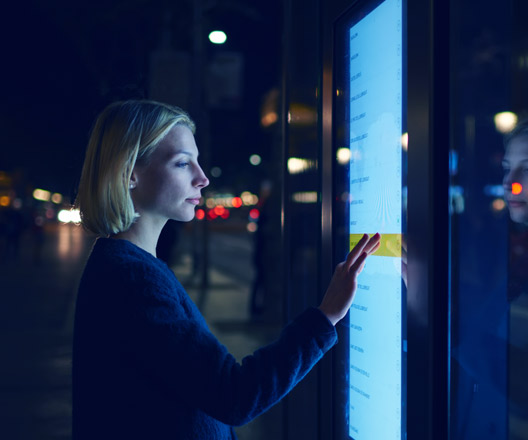
Listen to this blog
Written by AJ Leale, Sr. Director eCommerce
Customers’ online habits and behaviors are constantly changing. To survive in today’s competitive market, retailers need a holistic omnichannel experience as customers are increasingly unwilling to settle for less than they expect.
Here are five omnichannel trends for winning customers over in 2019.
1. 360-Degree View of the Customer
A 360-degree view of the customer is a single, end-to-end picture of the customer’s journey. This strategic approach enables brands to offer the best customer experience across all channels.
Achieving a complete 360-degree view of the customer starts with the ability to mine and understand data. Every time a customer interacts with a business they leave some kind of an online footprint. That’s why collecting and analyzing data is a crucial step towards a 360-degree view.
All departments need to be encouraged to enter data into a consistent format. Communicating cross-departmentally will be easier when there’s a consistency around how data is entered and managed. The next step consists of proper segmentation of customer silos and a process of categorization.
The end result would consist of a central database that has all the necessary data. It needs to be available to the right people at the right time. For example, if you have a call center, your sales assistant must have all the necessary data surrounding that specific customer.
2. BOPIS & BOSFS
BOPIS (Buy Online, Pick Up In-Store) is a growing trend among retailers, but so is its counterpart BOSFS (Buy Online, Ship From Store).
For Kohl’s, an American retail chain, the growth in BOPIS and BOSFS has lead to 20% to 25% additional sales.
Although 90 percent of sales still occur in physical stores, encouraging free in-store pickup can increase foot traffic to stores and provide additional sales opportunities for store associates.
With BOPIS, retailers can combine the ease of online shopping with the immediacy of in-store order collection to meet ever-increasing customer needs. It’s no wonder why 90 percent of them plan to implement BOPIS by 2021.
Thanks to BOPIS module, consumers can check the availability of a product both online and in nearby stores. They can also request to collect a product from any store in one click, while the store is immediately notified about the customer’s arrival.
BOPIS in particular can help retailers cut costs on shipping while also expediting last-mile fulfillment. Avoiding fees was also listed as one of the top reasons customers like BOPIS.
Walmart and Target have a well developed BOSFS strategy. They’re using it to achieve two important goals – improve customer support with low-cost, high-speed delivery and to boost revenue from more conversions.
In a world where constant gratification tops everything else, it’s no wonder why BOPIS and BOSFS are an important omnichannel trend.
3. Personalization
Omnichannel personalization is all about creating a tailored experience regardless of where the data was collected.
A customer data platform will be necessary for effective omnichannel personalization. The good news is that brands don’t need a perfect infrastructure in place to make significant strides toward omnichannel success.
They can start with web and email personalization and then by introducing digital displays and kiosks in their brick-and-mortar locations.
Even in the era of personal privacy, customers are willing to share their personal data in exchange for a more relevant and consistent omnichannel shopping experience.
Personalized on-site product recommendations are going to continue to be one of the biggest trends in 2019. These recommendations are based on browsing and purchasing behavior, retargeting shoppers, segmenting users into relevant email campaigns, etc.
See how we helped Vitamin World with personalization across e-commerce and call center.
4. Artificial Intelligence
Artificial Intelligence is important as it enables the omnichannel strategy to scale by providing insights into the needs of customers and creating customer journeys that deliver consistent experiences across different channels.
According to Accenture’s study only 13% of customers found that the digital-physical experiences were well aligned.
AI is beneficial in this case because it helps close these gaps with greater intelligence.
It can help retail brands define their customer personas more precisely, including their buying preferences and journeys by combining brand, event preferences, and transaction histories.
Salesforce and their AI-powered feature called Einstein Search can help deliver the right recommendations to customers. One of the earliest adopters of Einstein’s Visual Search is Rebecca Taylor. Take a detailed look at how AI will revolutionize eCommerce.
5. Augmented / Virtual Reality
Augmented reality brings the shopping experience to customers wherever they are.
It can be especially effective during busy holiday months. With AR, brands are able to appeal to a larger demographic.
Sephora created a Virtual Artist App with Modiface. It enables users to see how makeup products will look on their faces, utilizing the camera on their cell phone.
Another example is Home Depot’s Project Colour App. It allows users to see how a paint color would look like in their room.
Although AR can be challenging to implement, it can reap many benefits such as reducing the number of product returns and making better selections at the time of purchase. For retailers, AR can be beneficial for displaying more products in physical stores.
Conclusion
Omnichannel is a necessity as customers expect personalized and unified experiences from retailers.
Visionet can help you implement and enable your success by addressing all of these trends and more, so get in touch with our digital experts and let us help your brand with a frictionless omnichannel approach and solution.




